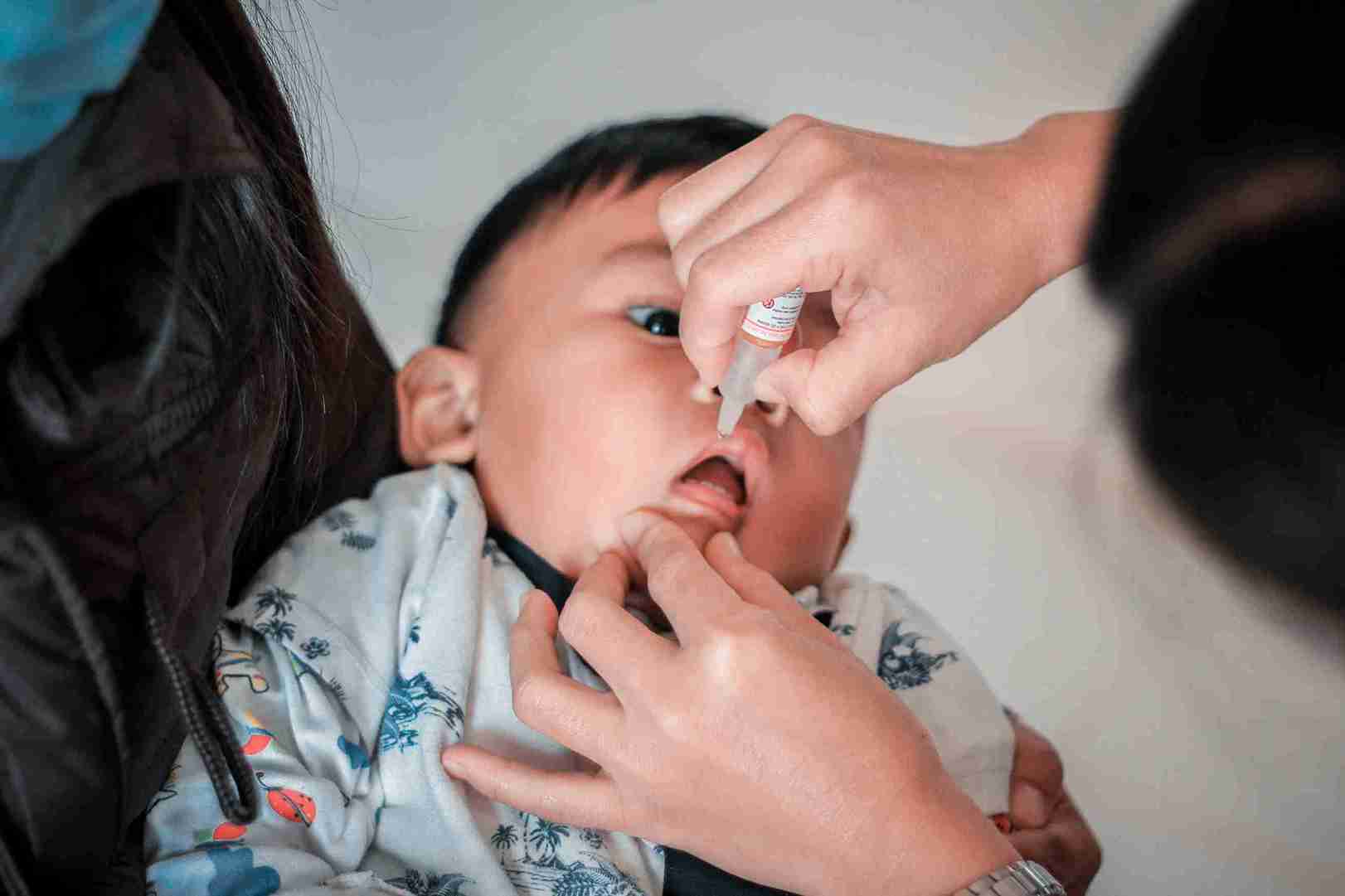
Parents always care and worry about their children's health. Immunisation is one of the most effective ways to ensure kids have lifelong protection against dangerous diseases like polio.
In this article, we shall explore the various aspects of the polio vaccine, including its benefits and potential side effects that may occur after administration.

Also known as poliomyelitis, polio is one of the most dreaded highly infectious viral diseases in the world. It severely impacts the functioning of the nervous system. Polio becomes fatal when the disease spreads to the brain and the spinal cord, which consequently results in devastating complications such as muscle weakness (manifesting in the inability to breathe, swallow or move), paralysis, and, in some cases, even death.
The poliovirus causes poliomyelitis, commonly known as polio. The virus primarily spreads by contaminated food, water, or direct contact with an infected individual.
People infected by the poliovirus usually do not have any apparent symptoms. In some cases, they may experience mild flu-like signs in the beginning that quickly progress to serious health problems, affecting movement and overall strength.
Among the most typical signs of polio are:
● Flu-like symptoms, such as fatigue, headache, fever, and sore throat
● Nausea, stomach pain, constipation or diarrhoea
● Sensitivity to light or to touch
● Neck stiffness
● A tingling, pins-and-needles sensation in the arms or legs
● Muscle weakness and spasms that make it difficult to move, swallow, or breathe
Polio can affect anyone at any age, but it primarily impacts children under five years old. In fact, it killed and crippled thousands of individuals in the early 1900s. However, polio has been eradicated in the majority of nations because of global immunisation campaigns.
The vaccine not only helps protect children and prevent outbreaks but also moves us closer to completely eradicating polio. It trains the body's immune system to recognise and fight the virus if encountered in the future, but it does not prevent polio infection. After vaccination, polio can still be contracted, but it is usually much less severe and less likely to cause long-term damage.

● Protects the next generation from a once-fatal illness
● Provides intense and long-lasting protection against the poliovirus
● Reduces the likelihood of serious illness and permanent paralysis
● Helps control the spread of the virus within communities
● Supports global efforts to eliminate polio completely
Two types of vaccines can prevent polio: the oral poliovirus vaccine (OPV) and the inactivated poliovirus vaccine (IPV).
IPV is administered by injection. This polio vaccine dose contains a virus that has been inactivated, or killed, so it cannot spread polio. After being given, it encourages the production of antibodies by the immune system, which offers durable defence. In nations with extremely low rates of polio infection, this vaccination is commonly used.
OPV is administered orally as drops. It contains a live virus that has been weakened. It is still used in areas where polio remains a public health risk because it is affordable and easy to administer. OPV can help create immunity within the community in addition to protecting the vaccinated individual. Rarely, though, if vaccination rates are low, the weakened virus could cause problems.
The polio vaccine is given in several doses to make sure children develop strong and lasting protection. At birth, babies receive the first oral polio vaccine (OPV-0). The subsequent doses follow at 6 weeks (OPV-1), 10 weeks (OPV-2), and 14 weeks (OPV-3). Along with OPV, children also receive inactivated polio vaccine (fIPV), which is given as a small injection at 6 weeks (fIPV-1) and again at 14 weeks (fIPV-2).
As children get older, they require booster doses to maintain strong immunity. An OPV booster is often administered between the ages of 16 and 24 months, strengthening the protection gained in the early months.
Parents can ensure their children are protected against polio from birth to early childhood by strictly adhering to this polio vaccination schedule.

Most people do not face any problems after getting the polio vaccine. However, a few side effects can sometimes occur:
● Mild fever
● Redness or soreness at the injection spot
● Temporary swelling
Rarely, some people may experience some polio vaccine side effects:
● Skin rashes or hives
● Swelling of the face
● Dizziness or fainting
● Nausea or vomiting
● Trouble breathing or wheezing
Global efforts have contributed to reducing the incidence of polio. The most effective method of ensuring children's safety is vaccination. As parents, ensuring that children receive their polio doses on time is a simple but vital duty. By doing so, they help create a healthier, polio-free world for everyone.


The first dose of the oral polio vaccine (OPV) is given to the newborn immediately after birth. At 6 weeks, the second dose is given as an inactivated polio vaccine (IPV). At 10 weeks, the baby receives another dose of OPV, followed by both OPV and IPV at 14 weeks. Between 16 and 24 months, OPV booster doses are given to maintain the protection from the earlier vaccines.

US physician Jonas Salk developed the first effective polio vaccine between 1952 and 1955.

The first dose of the polio vaccine is given to the newborn at birth. The second dose is given at 6 weeks, the third at 10 weeks, and the fourth at 14 weeks.

Polio vaccination refers to the immunisation initiative that aims to eradicate the deadly, contagious disease called poliomyelitis or polio. Since polio typically affects children who are less than 5 years old, the immunisation is administered during childhood itself. The vaccine contains either live or inactivated poliovirus, depending on the type of vaccine, to create lifelong immunity against the disease.